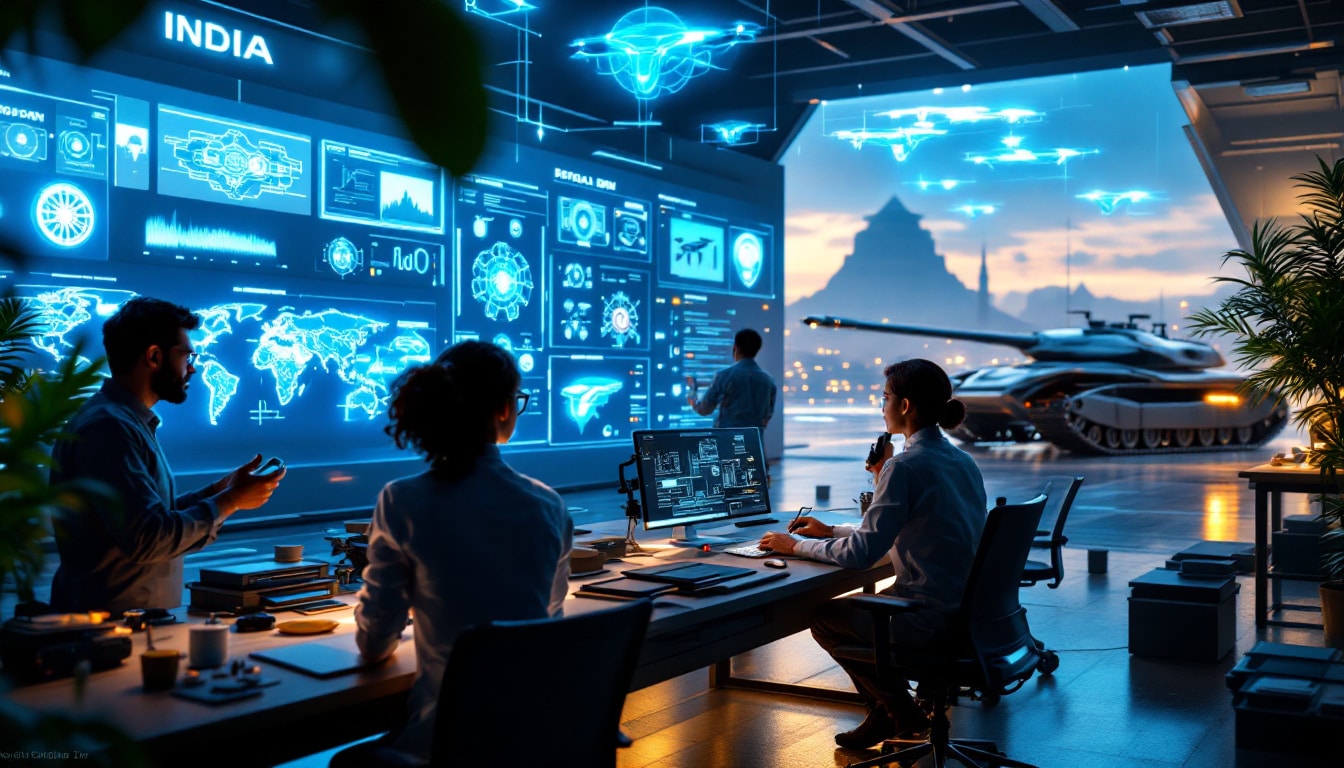Air defense is often perceived as a delicate technological frontier, yet some countries succeed in establishing remarkably effective systems.
Recently, India has demonstrated an impressive ability not only to defend its airspace but also to conduct high-precision strikes against enemy targets.
This duality of strength underscores a significant advancement in the field of defense.
India’s ability to integrate top-class technologies within its defense system has garnered astonishment. The emphasis on the development of local technologies in Defense and Space Technology is palpable. However, this remarkable success raises a crucial question: why does this proven expertise not extend to other equally vital sectors? Far from being a mere academic inquiry, it touches on the essence of the country’s industrial dynamics. To elucidate this issue, experts have been consulted to explore the motivations and obstacles that exist. In the context of a thorough discussion, influential players in the economy have provided insights into the mechanisms that govern this dichotomy.

Table des matières
ToggleWhat is India’s innovation strategy in the defense sector?
India has adopted an innovation strategy focused on defense that allows it to enhance its autonomy and modernize its military capabilities. The country has made significant progress in developing local defense technologies, focusing on self-sufficiency. This approach primarily manifests through increased investments in Research and Development (R&D), fostering the emergence of technology start-ups in the defense field. Public-private partnerships also play a crucial role in this process, contributing to a dynamic defense ecosystem.
The “Make in India” program embodies this desire to transform the defense landscape by encouraging local companies to innovate and produce weapon systems in India. This initiative facilitates technology transfer, thereby encouraging foreign companies to collaborate with Indian players. The goal is twofold: to ensure strategic independence while integrating advanced technologies.
Despite these successes, challenges remain, particularly regarding the modernization of existing infrastructures and the harmonization of development processes. This raises questions about India’s ability to project itself beyond the defense sector and apply similar innovations in other areas, such as space technology. It is thus interesting to mention that these challenges are being addressed through discussions with experts like Jaijit Bhattacharya, who advises on local economic policies and the impact of R&D on technological development.
How does India utilize defense technology for national security?
India’s national security relies on a combination of advanced military capabilities and robust defense technology. The country has understood the importance of integrating precision systems, thus making military operations more effective and responsive in the field. Recent developments in drone systems, such as those developed by the start-up Anduril, attest to this advancement. By connecting surveillance technology with weapon systems, India enhances its ability to respond swiftly to any threat.
Indeed, feats such as precision military strikes on enemy targets demonstrate a growing mastery of new technologies. This is not just about weaponry, but about integrating information technologies and data into security operations. Moreover, cyber-defense complements the whole by protecting critical infrastructures from cyberattacks. This echoes a global trend towards cybersecurity that is now inseparable from modern military strategies.
These developments contribute not only to domestic security but also to external deterrence. By positioning itself as a technological power in the military domain, India seeks to project an image of strength on the international stage. However, this raises questions about the diplomatic implications, particularly regarding cooperation with other states.
What are India’s recent investments in research and development?
India has ramped up its investments in research and development in the defense sector, recognizing that technological innovation is essential for national security. Government-wide initiatives, such as funding innovative programs, have resulted in significant advancements in the development of military materiel. The focus is on the emergence of high-end emulations capable of competing with the best global technologies.
Current defense projects include investments in professional training and support for start-ups focused on innovative solutions. Companies like the one mentioned in the article on air defense lasers have developed technologies that could transform tactical responses to threats. By integrating systems like Iron Beam, India aims to offer an ultra-modern air defense, thereby increasing its level of protection.
Furthermore, the collaboration between the government and the private sector, although still evolving, shows promising signs. For instance, the expansion of Maryland’s defense program proves that local administrations can play a role in accelerating technological development. Start-ups at the heart of this initiative help develop technologies that meet military needs, orchestrating the talents and innovative ideas that lie within small enterprises.
In parallel, this investment dynamic in the defense sector provides a framework for the internationalization of Indian products. This translates into exhibitions at international defense fairs, where India showcases its strengths against other military giants.
How does defense technology influence India’s economic development?
The defense sector plays a crucial role in India’s economic dynamism, contributing to the creation of thousands of jobs and a flourishing innovation ecosystem. This interaction between technological innovation and economic development offers immense potential. The broadening of strategic partnerships and collaborations with global players fosters the growth of the defense industry.
With the development of localized defense technologies, India not only enhances its security but also generates economic returns. Companies born from this innovation are positioning themselves in the international market, thus promoting the export of defense materiel. These economic benefits are reflected in increased foreign direct investment, thereby stimulating other industrial sectors.
The economic impact is also felt through the gradual replacement of military equipment imports with local products. Once dependent on foreign suppliers, India emphasizes developing internal solutions, adding significant value to its economy while strengthening its autonomy.
In conclusion, the constantly evolving landscape of Indian defense holds transformative potential for the national economy. By fostering a robust and innovative sector, India is becoming not only a regional military power but also a respected economic player on the global stage. Ongoing initiatives reveal the country as a potential leader in the defense technology industry in the future.
What are the trends in Indian defense technology?
The future of Indian defense is shaped by several key trends, ranging from increased focus on artificial intelligence (AI) to innovation in cybersafety. Autonomous technologies, including drones and unmanned ground vehicles, are now at the heart of the defense modernization strategy. With advancements in these areas, India aims to strengthen its surveillance and reconnaissance capabilities while developing more powerful and effective weapon systems.
The stakes of cyber-defense are also becoming significant, as the security of information and computer systems becomes essential for ensuring the integrity of military operations. Establishing specialized training programs and initiating collaborative projects with private entities are crucial elements that allow India to position itself at the forefront of cybersafety.
On the other hand, the integration of blockchain technologies into defense supply chains is on the rise, allowing for greater transparency and security in data processing. This represents a paradigm shift in the management of defense goods, significantly reducing the risks of fraud and errors.
Internationally, India is increasingly interested in producing defense technologies in collaboration with partners such as Israel and the United States. Discussions on strategic defense projects indicate a willingness to share technology and collaborate to address global threats. This network of collaborators will also strengthen cooperation in security matters in the Indo-Pacific region.
These trends, fueled by targeted investments and a willingness to innovate, mark the direction India is taking to become not only a key player militarily but also a leader in defense technologies, successfully amalgamating economic and strategic development.
























